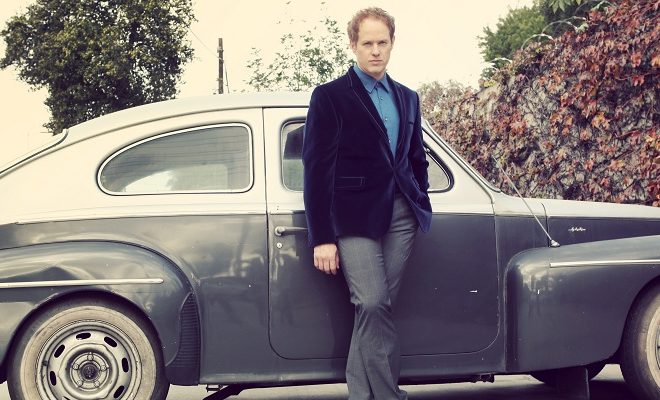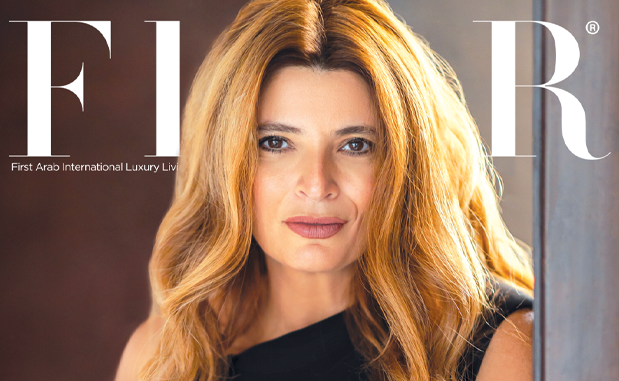
Interviews
Raphael Sbarge’s Green Wish

Special thanks to MLC PR
Tell me about your role on Once Upon a Time.
I play a dual character of Jiminy Cricket and a town therapist, Archie Hopper. He has been, both as a cricket and a counselor, a conscience for many other characters on the show, as well as a place for most of the other main characters to come for advice and guidance. He has been an advocate for Henry, a young boy involved in a custody battle between his adopted mother and birth mother, and generally the person most trusted in the town of Storybrooke. Some have said that Archie is the “conscience of the show.” He certainly is one of the more caring individuals in town.
How close do you feel to the character you play? How much “Raphael” is in it?
I do love Archie. And I have felt in some ways very close to him. I am a dad in real life, and certainly have drawn on my relationship with my son to inform the relationship with Henry. As well, I loved that they gave Jiminy a difficult past to inform his conscience—he wasn’t just “wise,” but he came through a rather tough personal story, which created a sort of “wounded healer.” I liked that. It gave him some personal depth and didn’t make him a know-it-all. For all intents and purposes: we all have our personal stories, but let’s just say that I resonate with this, having had a few bumps along the way.
What’s the inside scoop on Jiminy Cricket and Archie Hopper?
The inside scoop … hmmm…well, let me say that that I believe that still waters run deep. That he does his work because he cares, and truly wants to do the right thing. He seems to have “done wrong, so he can do right” and honestly, we are looking at some yet new chapters yet to be explored for Archie. Such as his love relationships, some of his personal life. And his decision to stay in Storybrooke to fight, to try to make a difference. Stay tuned!
You grew up in a theatrical family…and you did perform on stage numerous
times…what made you switch to the silver screen?
I did grow up in the theater. My mother was a theatrical costume designer, my father was a playwright when they first met at Yale. I grew up backstage in New York City, with the actors backstage, and in costume shops, and found my community there. So becoming an actor was a logical step, it seems. This is where my family was. I did my first play at 7, and continued working in the theater, as I still do today when I get the opportunity. As to working in film and television: While I have a first love (the stage), I do love working on film, as well. And in America at this point, in order to make a living it is very difficult to raise a family or exist solely on a “life in the theater.” Film and TV are wonderful mediums to explore different kinds of characters, different kinds of ways of working, and certainly have a broader reach. But the stage is, and always will be, home.
Tell me about your voiceover work.
I have been blessed with opportunities to work in some very popular video games, including Mass Effect and Star Wars: Knights of the Old Republic, among many others. It’s a natural extension of my work in the theater—that is, using your voice alone to communicate emotion and feelings, but without the use of your face or body. When you do voice work, you are invariably alone in a room with a microphone, and your imagination, so it can be quite challenging. But, suffice to say, it’s incredibly satisfying when you get to work on games such as Mass Effect that challenge the actor to bring his A game and create intimacy, relationship and passion with wonderful writing.
When did you first get drawn to environmental issues?
I think I have always just had a natural tendency toward the environment. I have a thing for trees—they kind of speak to me, as it were, and I have felt strongly about doing my part. I compost, recycle, have had a garden (not currently, due to my travel schedule, sadly), drive a hybrid, turn off lights, conserve my water usage, etc.—I have for a long time. I have also been alternately shocked and alarmed by the news I read of how humans are overwhelming of the planet. Things look a little complicated ecologically (to say the least) if we continue on our current course. So I have tried, both by example with my kids, as well for my own personal sense of “doing the right thing” to made decisions that consider the environment for many, many years. Seems to have come quite naturally, as it were.
Tell me about your NGO, Green Wish.
I got drawn into wanting to make a difference as a result of being a father. When my daughter was born, I was struck with how magical it is to suddenly be a dad, but as well how vulnerable I felt as a citizen of the world. Whether it be global warming, declining bee populations, natural habitats being destroyed, extreme weather conditions—I could go on. There is so much need out there, and I became determined to try to make a difference any way I could. I noticed that I would become overwhelmed personally with all the dire information out there, and was looking for a way to make a difference to as many different organizations as possible. Simply put: Green Wish is a nonprofit that raises money for other nonprofits. We locate a city with interested parties, work with them to establish a local board, and then identify local groups that are doing good work right in their community.
Why did you choose to found Green Wish with Ed Begley Jr.?
Ed Begley Jr. is, besides Al Gore, perhaps the face of the environmental movement in the U.S. He is both a very successful actor, and a man who truly, deeply cares about what is happening around us. It was my thought that if Ed and his wife, Rachelle, might be interested, it would help bring a heightened sense of awareness and credibility to what we were doing. Indeed, when I presented it to them, they got very excited about the potential of helping numerous groups within the local community. I am so pleased to say that Ed and Rachelle are both the face of Green Wish, and on the board.
How does Green Wish work?
Simply put, Green Wish is a nonprofit that raises money for other nonprofits that have green and/or sustainable agendas. The idea is to find organizations that are local and doing good work within the community and get them much needed funds. What happens is that a new chapter gets formed in an area with a board and a group of concerned individuals. They reach out into their community to identify organizations that are doing important work within their area, and then vet those nonprofits. We ask that the groups range across a spectrum of earth, air, water and sustainable education. They then work with retailers, businesses or individuals who are interested in a “community helping community” message, and raise money and awareness for the work being done right around them. This is, effectively, an “open source” charitable giving concept. New chapters work within our existing nonprofit status, raising money locally to go into their local community.
How many organizations do you fund?
Green Wish in Los Angeles currently funds six groups, but they rotate after certain financial caps are met. Each new city decides on the number—we began with nine in Los Angeles. In Kansas, for example, that Green Wish chapter works with five groups. But again, this gets to be decided by the local board where the Green Wish chapter exists.
How do you choose which organizations to fund?
The board considers new donor groups annually, and we discuss the work they do, and generally look for organizations that are doing actual work—that is, hands-in-the-dirt type of organizations, those making a direct difference in the community. We stay out of anything that feels political and like to keep them varied. It is a “Green Umbrella” approach. At this moment, we are in discussions to expand internationally, into Sri Lanka, and Turkey, working directly with a company who is interested in the Green Wish approach, as a function of their business plan, to give back to locally based organizations, in these countries. This will be rolling out in the spring, and we should have more information about it on our website in the coming months. We are very excited about this development.
Do the organizations reach out to you, or vice versa?
We welcome the organizations to reach out to us. As well, we are looking for concerned citizens who want to make a difference in their local communities, who would be interested in forming their own Green Wish board, and working locally in their area, to make an impact. My feeling is that if people can have a sense of progress right around them, and see the work that’s getting done right in their neighborhoods, it can counteract some of the apathy that gets generated from all the difficult news we are subject to any given day of the week.
Do you plan on expanding Green Wish?
Yes. We are expanding to new locations regularly, and in discussions with many folks all over the country who have found us, who share an impassioned idea of sustainable work that is local, and community-based giving. We welcome people to contact us at greenwish@greenwish.com and to visit us at www.GreenWish.com.
What is your Green Wish?
My Green Wish is that America can get behind the concept of global warming and begin to concertedly make decisions that more consciously consider the planet.
Tell me about Begley Street.
Out of the inspiration from Green Wish, I have developed and now produced a show about the Begleys’ new home— a LEED Platinum-certified home that’s being built in Studio City, California. The show is called “Begley Street,” and captures the Begleys’ adventure of building this new home. It also explores the science, technology and innovation associated with building, that has, frankly, exploded, of recent. Make it Happen Productions is the production company with a “conscience” and a commitment to using media to promote this idea, and the producers have all agreed to donate a portion of the proceeds to Green Wish. We have plans to launch the new show both on the Web (as an Internet show), as well as PBS. The network has given us strong support, and we feel this is a perfect place for us to do this show.
What attracted you to the idea of building the Platinum LEED-certified home?
While it was not my personal decision to do this, it seemed very important to film and capture the building of this family’s home, as an example of a new way of doing things. LEED stands for Leadership in Energy and Environmental Design. It is an independent body that holds higher standards for building, and energy usage. There are different grades of LEED: Silver, Gold and then Platinum (that being the highest). The Begleys are shooting for a Platinum LEED home. Once complete, it will be a Net-Zero home, meaning it will be not be drawing energy to run the home; in fact, it will be creating energy and putting it back into the grid for others to use. Our feeling is that if you cannot build your own LEED home, you might be inspired by some of their choices, and find that there are things you can do yourself. Our homes are the single largest consumers of energy, and as we make better, more efficient choices, exponentially, it can add up to making a big difference.
Any upcoming environmentally friendly plans?
Look for “Begley Street” at “OnbegleyStreet.com” and follow me on twitter
@RaphaelSbarge, or Facebook for updates on the coming release dates.










0 comments